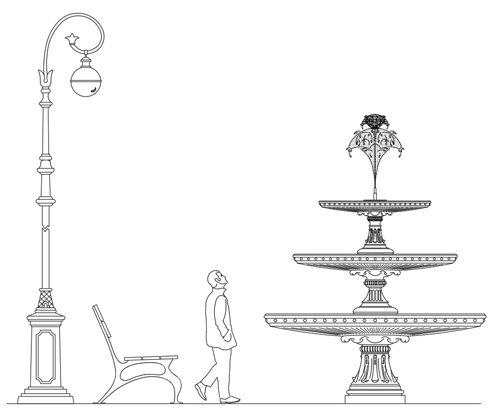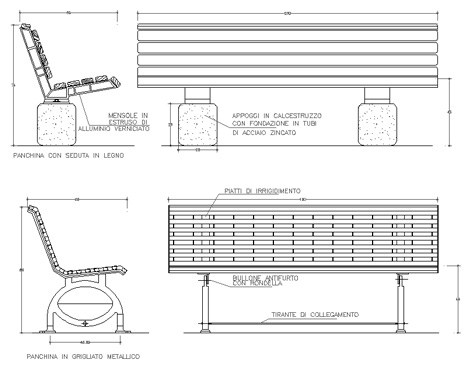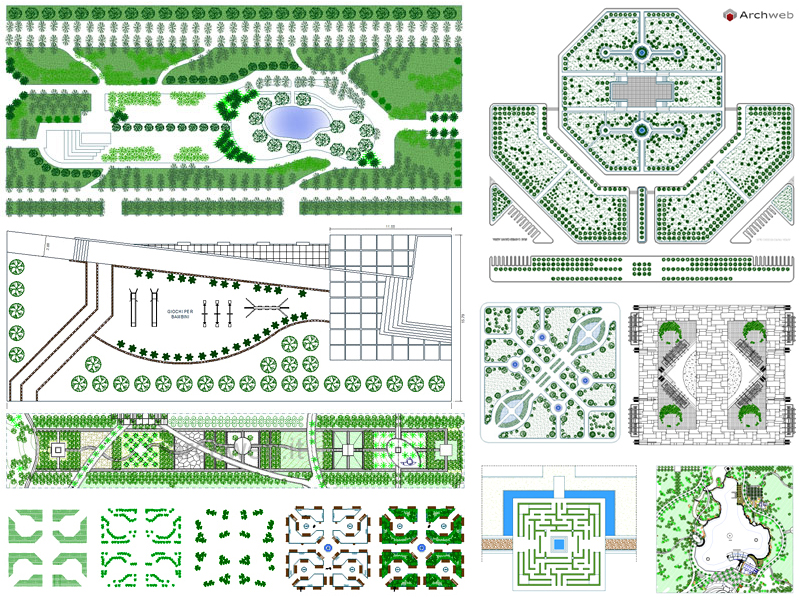The bench
Guide to the best known of street furniture
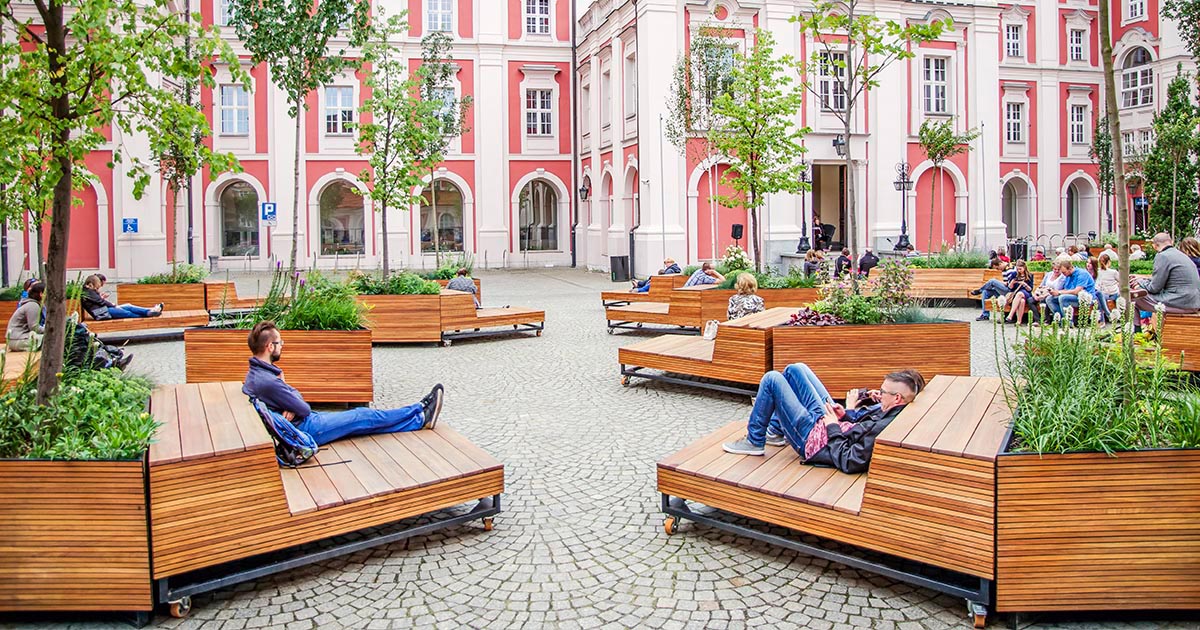
The outdoor bench is considered one of the most popular public furniture components, thanks to its dual function, practical and aesthetic. In the urban context, it is found in parks and gardens but also along streets and pedestrian paths; sometimes it is equipped with flower boxes, in order to give green to those urban lots characterized by strong overbuilding. From a simple seat to an artistic installation, the bench has undergone considerable changes over time, up to today becoming a smart complement, thanks to which citizens can benefit from increasingly innovative services.
Below is a complete guide to getting to know this important piece of furniture that affects most of our cities.
The concept of the bench
The undisputed queen of street furniture, the bench boasts very ancient origins. In fact, born from the need to have a seat inside farmyards and farmhouses, it spreads before the classic single-seater chairs. Used by a wide range of users, the bench is often placed in front of the domestic fireplace in order to accommodate the whole family that meets in the evening or in their free time. Initially it consisted of a simple wooden plank supported by two vertical elements; only over the years was it enriched with backrests and arm rests. Archetype of modern benches, the raw wood bench marks the beginning of the history of the chair of which it is the direct ancestor.
Over time, this piece of furniture takes on a public but also private nature, just think of the gardens of the nineteenth-century villas where the ad hoc designed bench and surrounded by flowering hedges and shrubs could not be missing. Often, an indispensable integration of paths and walks, the bench is placed in strategic areas, such as a belvedere or a space intended for temporary parking. To this end, it is considered necessary to design real spaces intended for the break, to also favor the re-establishment of a relationship with the surrounding context and nature.
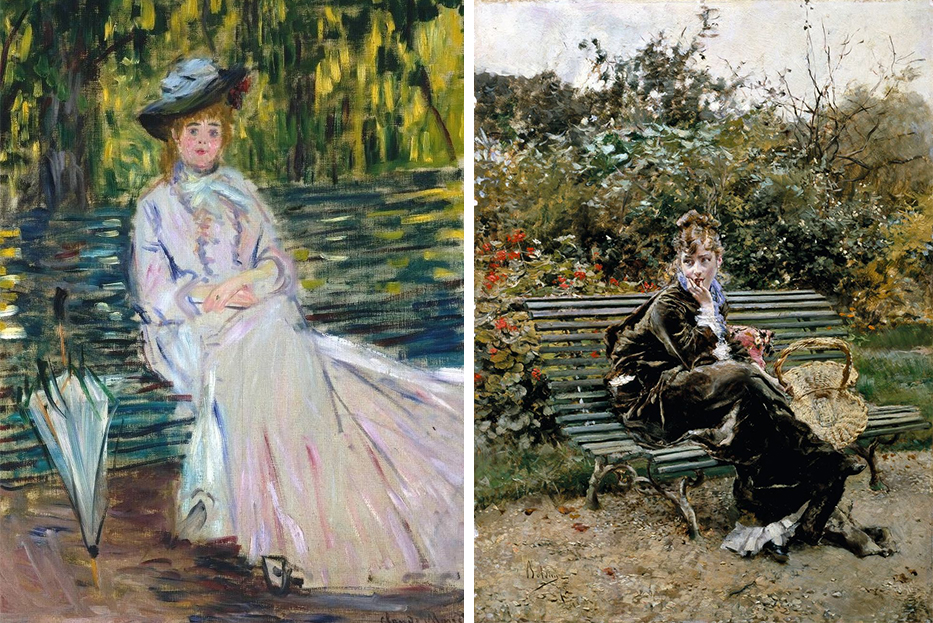
On the right “On the bench” by Bois – Giovanni Boldini, 1872
Throughout history, the bench has been considered not only a piece of furniture that had to fulfill its function of rest, but one of the greatest symbols of democracy and sociality. In fact, it is precisely in this place that individuals met in moments of relaxation and leisure and in this time frame the exchange and knowledge developed. These principles are still today basic elements of the concept of civilization and progress.
Furthermore, this furniture asserts itself as a place where stories are born and exceptional moments develop, becoming the subject of writings and theatrical and cinematographic scenery. The bench thus turns out to be a social emblem, a space linked to the common imagination and in some ways, deviating from its purely technical purpose, a romantic place and an almost dreamlike setting.
The bench project
Within the urban setting, the bench can find a place in diversified areas that have specific functions. The first case is that of public parks: these are indispensable spaces for the city that represent real green lungs, necessary for the improvement of atmospheric quality. Depending on the size of the park, inside there will be paths, sports areas, play areas and leisure areas. It would be difficult to imagine such spaces without the presence of adequate seats able to offer a comfortable stop to the user.
For this reason, the design of the benches must be carried out carefully. It will be necessary to place an adequate number of seats according to pre-established distances and choose the type of bench in relation to the specific function that is needed. In the case of relaxation areas where strollers want to find privacy and tranquility, single-seater benches will be indicated. These are seats equipped with armrests, where you stop to read a book or to relax. If, on the other hand, you are in an area with ample sociality, such as near a refreshment point or a bowling green, generously sized benches will be more suitable, oriented in order to encourage chat and interpersonal exchange. Another case can be that of seats located along cycle paths and pedestrian paths: the most modern solutions integrate bike racks and video surveillance cameras to ensure maximum functionality and safety. Finally, in the case of areas intended for sport and exercise, the bench can be equipped with an SOS column, prepared in case of need for the user.
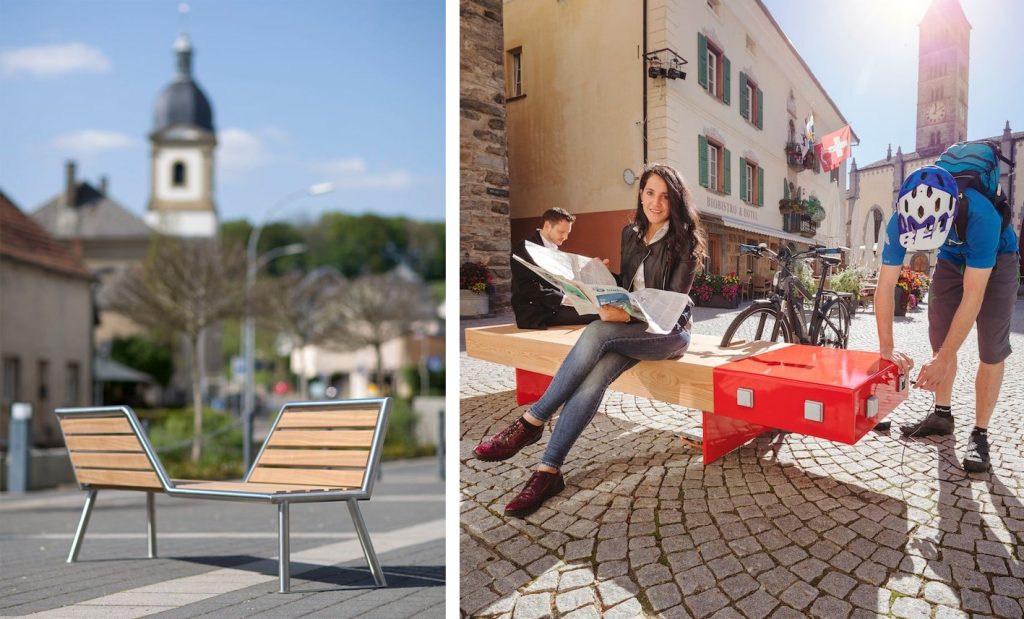
On the right: multifunctional bench – https://ioarch.it/i-vincitori-del-xxvi-compasso-doro/
To view the urban park project click here
However, benches can not only be found in parks and along paths but also inside squares and urban streets. Also in this case, this furniture will contribute to a better use of the city space and favor the socialization of users. Sessions are also necessary in the large arteries, in correspondence with the bus shelters, where a comfortable seat is essential to overcome long waits due to traffic problems and slowdown in the flow of public transport.
The bench and innovation
Today on the market there are numerous solutions that differentiate the benches by shape, size, material and integrated services. They range from classic rectangular seats, in stone, to those with diversified and sometimes very original shapes. The bench can be equipped with a backrest, integrated lights and devices designed to offer citizens more and more functionality linked to the needs of the moment. In this regard, the urban furniture sector is constantly growing and design is increasingly oriented towards “smart” products that guarantee a constant connection and sharing of data and information useful for users.
A concrete example of this trend is represented by “smart benches” able to exploit renewable resources, minimize consumption and optimize their performance. In fact, the inclusion of photovoltaic films will be destined to become the standard prerogative of any type of furniture: backrests and seats become energy producers, thanks to the ability to capture the sun’s rays and convert them into energy necessary for integrated services or those present in the context. These are benches that offer the possibility to recharge mobile devices, collect useful data such as the presence of seated users or weather and atmospheric conditions. Sometimes, the materials that make up these types of furniture are chosen to be self-cleaning and thus facilitate their maintenance; an example is titanium, capable of destroying the presence of bacterial substances. In this way, thanks to the maximization of hygienic-sanitary conditions, the health of users is preserved, and this prerogative is very important, especially in a moment of global pandemic like the current one. Another feature not to be overlooked is the flexibility of the benches which, thanks to the modularity and variation of integrated systems, can be custom designed according to specific needs.
According to these criteria, the bench is conceived as an element that is part of the surrounding environment, which interacts and collaborates with the components of the context, in order to improve its functioning. It is a demonstration of how such furniture today manages to make the urban scenario more valuable, safe and sustainable at the same time.
The bench as a manifestation of art
It is clear that the bench plays an important role within the urban context from a functional, safety and social interaction point of view. However, it is important to specify how the sessions are also exploited for artistic and aesthetic purposes. Just think of the benches of the Parc Guell in Barcelona, which have become a symbol of how architecture and urban design can be one. In fact, if you look at them, materials, shapes and colors create a visual continuum with the surrounding architectural context. The sinuous shape of the seats and backrests defines the terrace from which it is possible to observe the city from above. Thanks to their strong characterization, the Spanish benches today can be recognized all over the world.
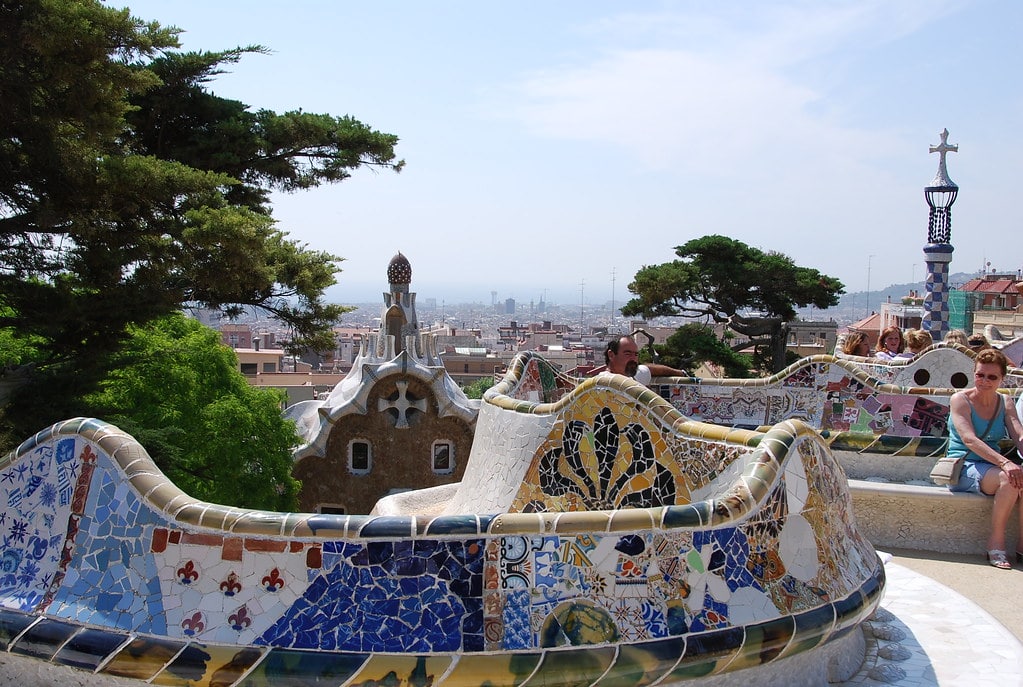
Another famous example of how the bench can become iconic is represented by the “Big Benches”, giant benches that have marked their origin in the Piedmont area and precisely in the Langhe. Born from the idea of the American designer Chris Bangle, they want to be a means to relive the typical wonder of childhood, observing the views of the territory in which they are inserted. Today, from the idea of oversized seating, a worldwide organization has been born that deals with the design of these furnishings-installations, capable of attracting tourists and curious people even to places that have not been previously visited.
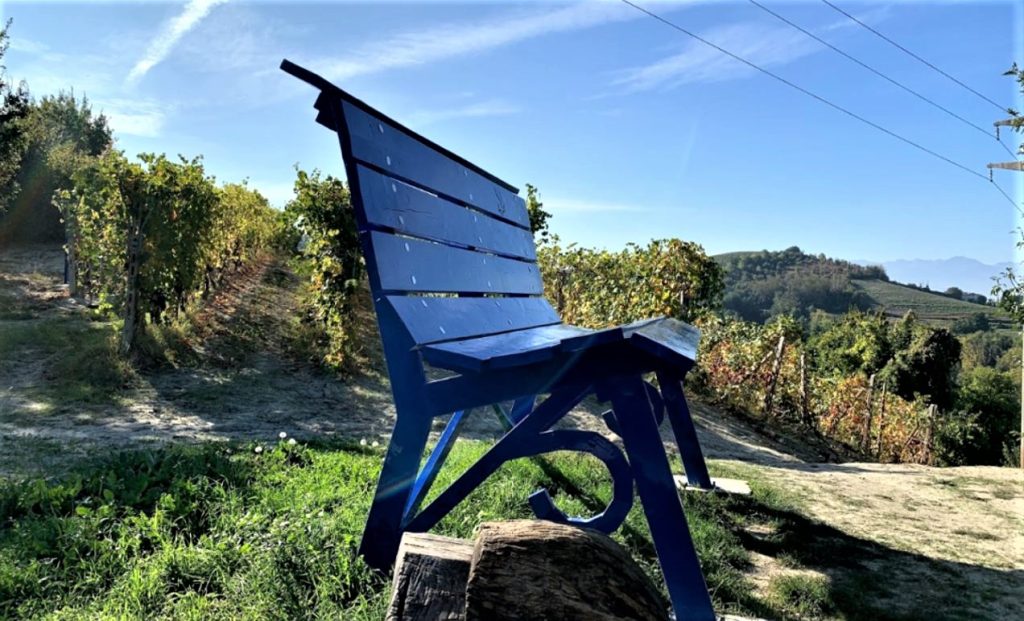
But the benches can become a tool to convey important social messages. This is the case of the red benches, conceived as permanent signs, aimed at combating violence against women. This is an initiative that intends to reach everyone and lead to collective reflection about an unfortunately rampant problem.
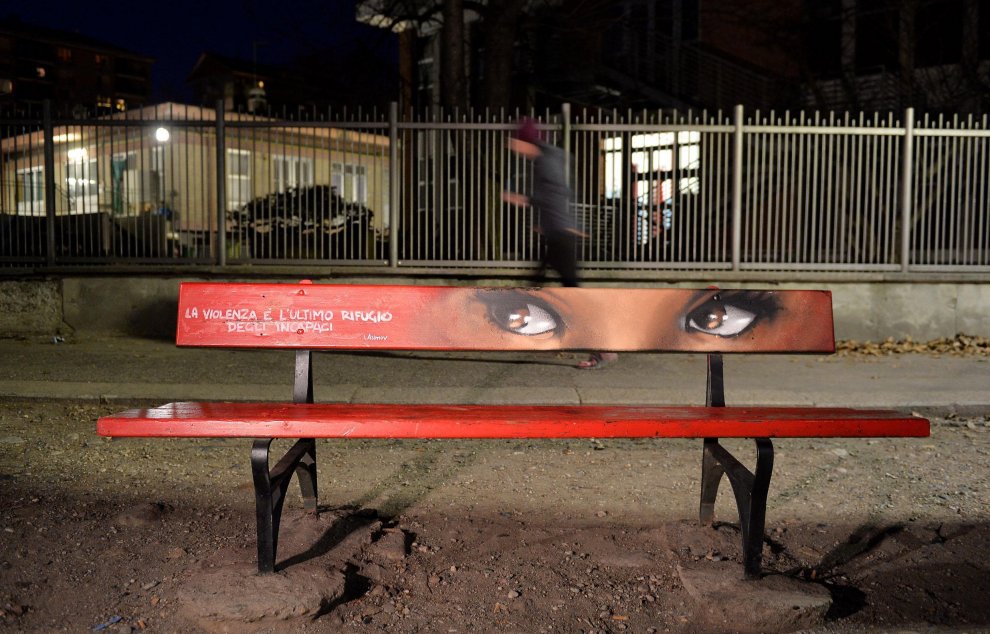
In short, not just a simple street furniture but an element of the collective imagination and a multifunctional component, indispensable for today’s civilization.






























































